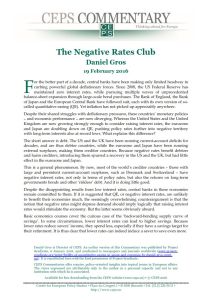Join getAbstract to access the summary!

Join getAbstract to access the summary!
Daniel Gros
The Negative Rates Club
CEPS, 2016
What's inside?
The quantitative easing that central banks in creditor countries have undertaken hasn’t succeeded.
Recommendation
Quantitative easing and ultralow interest rates have been the weapons of choice for central bankers looking to spur recovery and growth. Yet the approach hasn’t been an unqualified success, according to Daniel Gros, director of the Centre for European Policy Studies. He offers a fresh perspective on why some countries have managed to recover while others remain in idle mode. getAbstract suggests this succinct report on a fairly complex subject to those who want a short introduction to the implications of monetary easing and negative interest rates.
Summary
About the Author
Daniel Gros is the director of the Centre for European Policy Studies.



























Comment on this summary